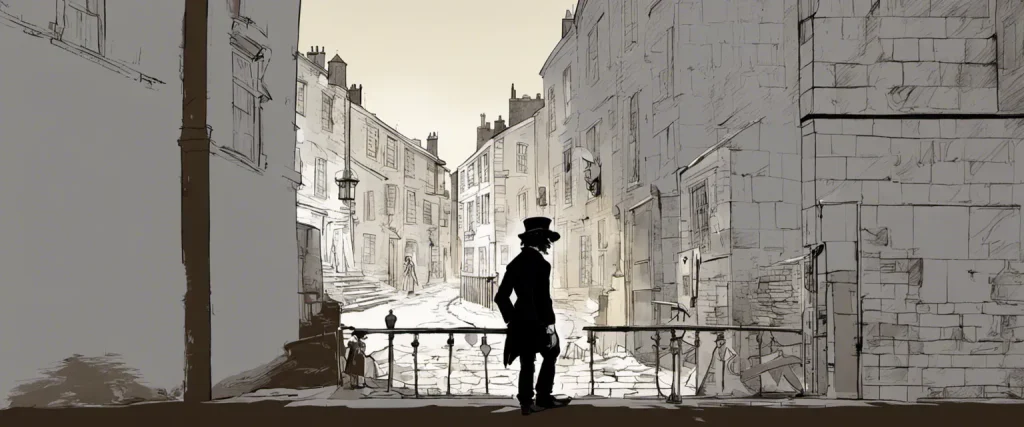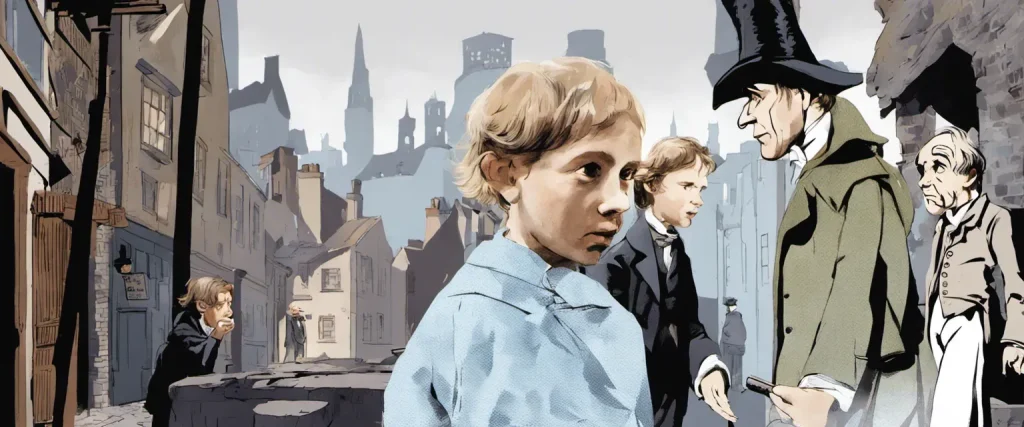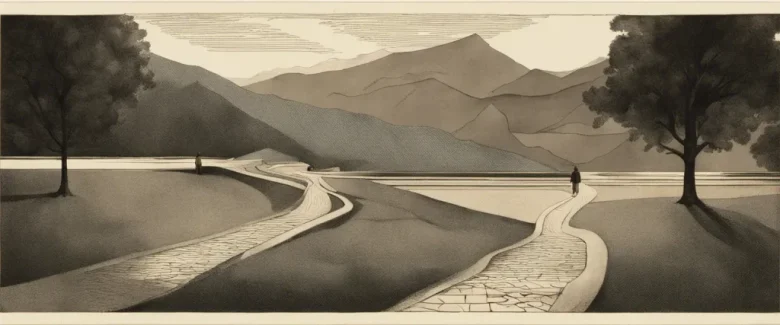In Charles Dickens‘ classic novel, “Oliver Twist,” a young orphan boy endures the harsh realities of Victorian England’s social injustices. Set against the backdrop of poverty and crime, this gripping tale unravels the enthralling story of Oliver’s extraordinary journey to find love, belonging, and his true identity. Known for his vivid portrayal of vivid characters and intricate plotlines, Charles Dickens, one of the most influential writers of the 19th century, captures the essence of societal inequality and redemption through his timeless works.
Chapter 1: Introduction
Chapter 1 of Charles Dickens’ famous novel “Oliver Twist” introduces us to the main character, Oliver, and sets the stage for his life of hardship and struggle. The chapter begins by describing Oliver’s birth in a workhouse, where his mother dies soon after giving birth to him. The sad fate of Oliver’s mother foreshadows the difficult life that awaits him.
Oliver spends the first nine years of his life in the workhouse, enduring mistreatment and neglect from the staff. Despite the hardships, Oliver remains a kind and innocent child, which is highlighted when he asks for more food during one of the workhouse meals. This simple request causes an uproar among the staff and the board members, who deem Oliver ungrateful for wanting more than the meager portions provided. This incident demonstrates the injustices and cruelties of the welfare system at that time.
Due to his audacity to ask for more, Oliver is labeled a troublemaker and is chosen by the board members to serve as an apprentice at an undertaker’s shop. There, he faces further mistreatment and abuse from his master and the other apprentices. Oliver’s experience in the workhouse and the undertaker’s shop serves to highlight the injustices and harsh realities faced by poor children in Victorian England.
The chapter ends with Oliver being mistreated by other boys at the undertaker’s shop, which serves as a cliffhanger for the next chapter. This introductory chapter sets the stage for Oliver’s journey as he navigates the harsh world around him, capturing the readers’ sympathy and anticipation for the challenges and adventures that lie ahead.
Chapter 2: Escape to London
In Chapter 2 of Oliver Twist, titled “Escape to London,” the story resumes with Oliver growing up in the workhouse. Oliver, a lonely and mistreated orphan, remains in the care of Mrs. Mann, a careless and neglectful woman who is supposed to care for the children. Despite the harsh living conditions, Oliver finds solace in the stories of his mother and dreams of a better life.
One day, Oliver is chosen among other boys to draw lots, and the unfortunate result selects him to request more gruel from the master, Mr. Bumble. This request is a significant event for Oliver, as it marks his first attempt to push beyond the confines of the workhouse. When he approaches Mr. Bumble, who is in a foul mood due to his recent marriage to the widow, Mrs. Corney, Oliver politely asks for a second serving of gruel.
However, Oliver’s simple request stirs an unexpected reaction from Mr. Bumble, who accuses him of being ungrateful and attempting to incite a rebellion. The argument escalates until Mrs. Mann intervenes, and Mr. Bumble decides to punish Oliver. In his fury, Mr. Bumble decides that Oliver will be sent away to a branch workhouse in London, as a part of his punishment.
Oliver is led away by Mr. Sowerberry, the undertaker, who is responsible for taking him to London. During the journey, Oliver experiences mixed emotions, alternating between fear and excitement. As they reach the outskirts of London, Oliver catches a glimpse of the city’s grandeur, and despite the intimidating smoke and noise, it fills him with hope and wonder.
Chapter 2 sets the stage for Oliver’s escape from the workhouse to the vast and bustling city of London, where his adventure will unfold, and his fate will take unexpected twists and turns.
Chapter 3: The Gentleman Thief
Chapter 3 of “Oliver Twist” by Charles Dickens, titled “The Gentleman Thief,” introduces the infamous character of Fagin. The chapter begins with Oliver waking up in the house of thieves after the events at the workhouse. Oliver’s eyes meet those of a sly and wicked man named Fagin, the leader of a gang of child pickpockets.
Fagin is described as an elderly man with a hooked nose and a sinister appearance. He seems to possess a power over the children, using manipulation and cunning to groom them into becoming skilled thieves. Despite his friendly demeanor at times, it becomes clear that Fagin’s intentions are far from honorable.
The chapter reveals Fagin’s tactics for corrupting the young minds. He uses material possessions to gain their trust, giving them food, shelter, and clothes while gradually involving them in criminal activities. Fagin’s gang is made up of young boys like Jack Dawkins, also known as the Artful Dodger, who becomes a particular friend and mentor to Oliver.
During Oliver’s time with Fagin, he begins to observe the gang’s criminal activities, including the art of picking pockets and the fencing of stolen goods. Although Oliver is initially hesitant to participate, his hunger and naive nature lure him into Fagin’s world.
The chapter concludes with the introduction of another significant character, Bill Sikes, a dangerous and violent man associated with Fagin. Sikes plays a crucial role in shaping the tone and direction of the story, foreshadowing darker events to come for Oliver.
In “The Gentleman Thief,” Dickens expertly portrays Fagin as a master manipulator and presents a morally corrupt world where vulnerable children are easily exploited for criminal gain.
Chapter 4: A Twist of Fate

Chapter 4: A Twist of Fate of the book Oliver Twist by Charles Dickens continues the narrative about Oliver’s miserable existence at the workhouse. The summer passing quickly, the arrival of winter brings freezing temperatures and harsh conditions for the boys. They face the cruelty of their keepers and suffer from hunger and neglect.
Oliver, weakened by the lack of food and care, is chosen to ask for more gruel during a meal. In a moment of desperation, scared of the consequences, he goes up to the master, Mr. Bumble, and makes his famous request: “Please, sir, I want some more.” This audacious act causes an uproar among the staff, and they are shocked at the young boy’s impudence.
The board members decide that Oliver must be punished and send him off to a coffin-making factory run by a man named Mr. Sowerberry. Despite the bleak nature of his new surroundings, Oliver manages to find solace in the company of a young girl named Charlotte, Sowerberry’s daughter.
A particular incident occurs when Oliver is sent out on his first funeral job—carrying a child’s coffin—to earn his keep. As they visit the house from where the child was taken, Oliver encounters another boy, who acts suspiciously and flees the scene. Oliver, unaware of the significance of this encounter, returns to the Sowerberry’s shop.
This chapter concludes with the revelation that Oliver’s life is about to change again. Mr. Sowerberry and his wife decide to put Oliver out for an apprenticeship, where he will be bound to a cruel chimney sweep named Gamfield. And so, Oliver’s fate takes another twist, setting the stage for the next chapter of his challenging journey.
Chapter 5: Unmasked Secrets
Chapter 5: Unmasked Secrets of “Oliver Twist” by Charles Dickens opens with the general realization that the paupers in the workhouse are a source of profit for businessmen, rather than objects of charity. Mr. Bumble, the beadle, is introduced as a pompous and self-important character determined to uphold the image of the parish.
Oliver is now nine years old and working in the workhouse as an orphan. One day, Mr. Bumble, in need of an apprentice for someone, chooses Oliver, who is delighted at the prospect of finally escaping the workhouse. Oliver’s enthusiasm quickly dissipates as he learns that his apprenticeship will be a monotonous entry-level job with a coffin maker.
Enduring the cruel treatment of his employer, Mr. Sowerberry, Oliver finds some solace in befriending a subdued and sickly boy named Noah Claypole, who also works as Sowerberry’s apprentice. However, Oliver’s kind nature and refusal to participate in mocking a fellow pauper girl named Charlotte earns him the enmity of Noah.
As time passes, Oliver becomes even more miserable in his apprenticeship, longing for friendship, happiness, and a touch of kindness. His only solace comes from imagining what it would be like to have a loving family or to be like the other children he glimpses from the windows.
In Chapter 5, Dickens exposes the harsh realities of the workhouse and the exploitative nature of the people who profit from the misfortune of these innocent children. Oliver’s yearning for love and acceptance is a force that drives the narrative forward and sets the stage for the trials and adventures he will face throughout the remainder of the novel.
Chapter 6: Escaping Danger
Chapter 6 of “Oliver Twist” by Charles Dickens, titled “Escaping Danger,” continues the story of the young protagonist, Oliver, and his trials and tribulations in the cruel world of Victorian London.
In this chapter, Oliver recovers from his illness under the care of Mrs. Sowerberry, the wife of the undertaker. However, he soon becomes restless and yearns for more freedom and a better life. One day, when left alone in the shop, Oliver notices an unlocked door and a simple lock-picker on the floor. Overcome by curiosity and the desire for adventure, he takes the opportunity to escape the confines of his current situation.
Leaving the shop, Oliver wanders through the dark and unfamiliar streets of London. As he walks, Dickens describes the bleak and grimy surroundings, painting a vivid picture of the impoverished neighborhoods and the exploitation of the poor. Oliver encounters a few shady characters along the way, including a drunken man and a mischievous boy, who offer a glimpse into the harsh reality of the city’s underbelly.
Finally, Oliver stumbles upon a kind-hearted gentleman named Mr. Brownlow, who takes pity on the young and disheveled boy. Mr. Brownlow’s initial suspicion is dispelled when he notices a striking resemblance between Oliver and a portrait of a woman hanging in his home. The chapter ends with Oliver passing out from exhaustion, secure in the knowledge that he has escaped the dangers of the city, at least for the time being.
Chapter 6 of “Oliver Twist” serves as a turning point in the story, as Oliver’s escape leads him to his first encounter with a person who may offer him compassion and a chance at a better life. Furthermore, Dickens skillfully brings attention to the inequality and harsh living conditions that were rampant during the Victorian era, setting the stage for the social commentary that permeates the rest of the novel.
Chapter 7: The Criminal Pursuit
In Chapter 7 of Charles Dickens’ novel “Oliver Twist,” the focus shifts to the criminal underworld of London. After being sold to an undertaker named Mr. Sowerberry, young Oliver is made to work in the funeral business. However, he is constantly mistreated and subjected to harsh conditions.
One day, while running an errand, Oliver encounters a group of boys who work for a thief named Fagin. They entice Oliver with the promise of food and a place to stay, desperate to recruit him into their gang of pickpockets. Oliver, unaware of their intentions, is lured by the offer and follows them to Fagin’s den.
Oliver soon realizes that he has stumbled into a den of thieves. Fagin, an old man with a long, hooked nose, is the sinister mastermind behind their criminal activities. Oliver is introduced to the other members of the gang, including the Artful Dodger, a young boy with a charismatic personality, and Charley Bates, a mischievous trouble-maker.
Overwhelmed by the chaotic environment, Oliver is forced to participate in a mock theft organized by the boys. Although hesitant, he follows their instructions. However, their plan goes awry when Oliver is accused of attempting to steal a handkerchief from a gentleman. The situation escalates, and Oliver is apprehended by the police.
Although Oliver is terrified, his innocence is eventually established. The gentleman, Mr. Brownlow, takes pity on him and offers him shelter in his home. Meanwhile, as the criminals disperse, Oliver begins to experience a glimmer of hope, finding himself one step closer to a better life.
In Chapter 7, Dickens portrays the corrupt nature of a criminal gang while highlighting Oliver’s vulnerability and naivety. The encounter with Fagin’s gang sets the stage for a series of dramatic events that will shape Oliver’s future, shedding light on the harsh realities of Victorian-era London.

Chapter 8: Redemption and Resolution
Chapter 8 of Charles Dickens’ novel “Oliver Twist” is titled “Redemption and Resolution.” It serves as a pivotal point in the story, where the main character, Oliver, finds redemption and resolution after a series of trials and tribulations.
The chapter begins with the introduction of Mr. Brownlow, an old and wealthy gentleman who takes a keen interest in Oliver’s well-being. Brownlow had observed Oliver’s honesty and innocence, leading him to suspect that Oliver has been wrongly accused of theft. He insists on proving Oliver’s innocence and offering him a chance to start a new life. Oliver leaves the workhouse and moves into Mr. Brownlow’s house, where he experiences comfort and kindness for the first time.
Meanwhile, the villainous characters in Oliver’s past, including Fagin, Sikes, and Monks, grow concerned about Oliver’s newfound security. They fear that he may expose their criminal activities. Despite their efforts to capture Oliver, they fail to do so, and Oliver remains under the protection of Mr. Brownlow.
In an attempt to safeguard themselves, Fagin and Monks hatch a plan to discredit Oliver’s claims, believing that if they can prove Oliver is a criminal, his accusations against them will be dismissed. However, their plan fails, as their lies are exposed, and they’re forced to flee from London.
As the chapter progresses, Oliver recovers from a grave illness and reveals crucial information about Monks to Mr. Brownlow. It is discovered that Monks is Oliver’s half-brother and the true heir to their father’s fortune. Through these revelations, Oliver’s lineage is clarified, allowing him to inherit the money and ultimately find his rightful place in society.
In this chapter, Oliver’s redemption is realized as he breaks free from the shackles of his dark past. Through the kindness and support of Mr. Brownlow, he finds a new beginning, a sense of belonging, and the resolution of his troubled existence.
After Reading
In conclusion, “Oliver Twist” by Charles Dickens is an enthralling tale that explores themes of poverty, justice, and morality. Through the journey of the young orphan Oliver, readers are exposed to the dark underbelly of Victorian society and the struggles faced by the marginalized individuals within it. Dickens skillfully highlights the disparity between the wealthy upper class and the impoverished lower class, shedding light on the harsh realities of life during this time. With its intricate plot and compelling characters, “Oliver Twist” serves as a timeless reminder of the importance of compassion, integrity, and the pursuit of social justice.
1. The Life of Lazarillo de Tormes” by Anonymous: This Spanish picaresque novel is a perfect choice after reading “Oliver Twist.” It follows the life of Lazarillo, a young orphan, as he navigates through a corrupt society, encountering various masters who shape his character and expose the harsh realities of life. Just like Dickens, this book sheds light on social injustice and provides a glimpse into the lives of those who struggle in a harsh world.
2. The Great Gatsby” by F. Scott Fitzgerald: Set in the 1920s during the Jazz Age, this classic American novel vividly portrays the decadence and disillusionment of the wealthy elite in New York. After delving into the poverty and struggles faced by characters in “Oliver Twist,” “The Great Gatsby” offers a contrasting perspective on wealth, materialism, and the collapse of the American Dream. Fitzgerald’s lyrical style and complex characters make this a must-read.
3. The Red And The Black” by Stendhal: Stendhal’s masterpiece is a compelling novel that explores ambition, love, and social climbing in post-Napoleonic France. Like Dickens, Stendhal delves into the complexities of human nature and society, creating a rich narrative that questions society’s expectations and norms. “The Red And The Black” offers a superb exploration of the inner workings of the human mind, making it an excellent choice after the emotionally charged “Oliver Twist.”
4. Jane Eyre” by Charlotte Brontë: This classic Gothic novel presents a powerful female protagonist, Jane Eyre, who overcomes adversity and challenges societal norms. Charlotte Brontë’s exploration of themes such as love, independence, and social class resonates well with the themes seen in “Oliver Twist.” Additionally, the novel provides a thought-provoking critique of gender inequality and the role of women in Victorian society.
5. “To Kill a Mockingbird” by Harper Lee: This Pulitzer Prize-winning novel is a thought-provoking examination of racism, injustice, and the loss of innocence in the Deep South. After the raw depiction of poverty and hardship in “Oliver Twist,” “To Kill a Mockingbird” offers a different perspective on social injustice through the eyes of a young protagonist. Harper Lee’s masterful storytelling and poignant exploration of humanity make this a must-read, confronting readers with the troubling realities of prejudice and inequality.



